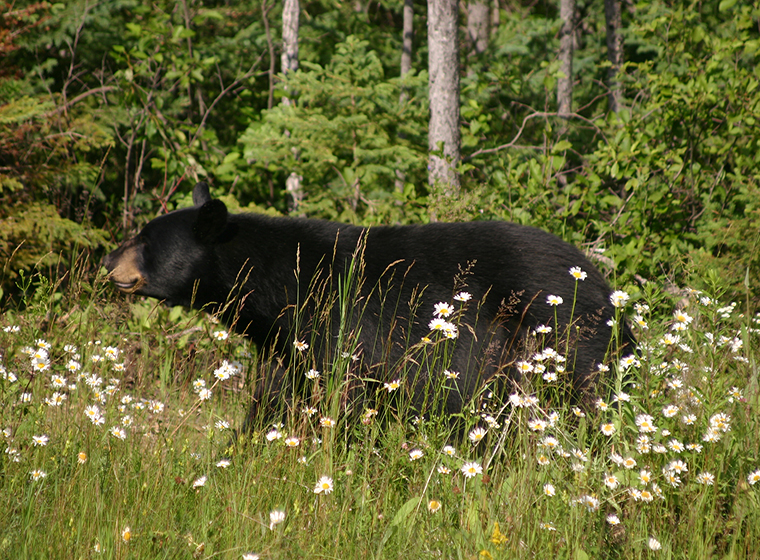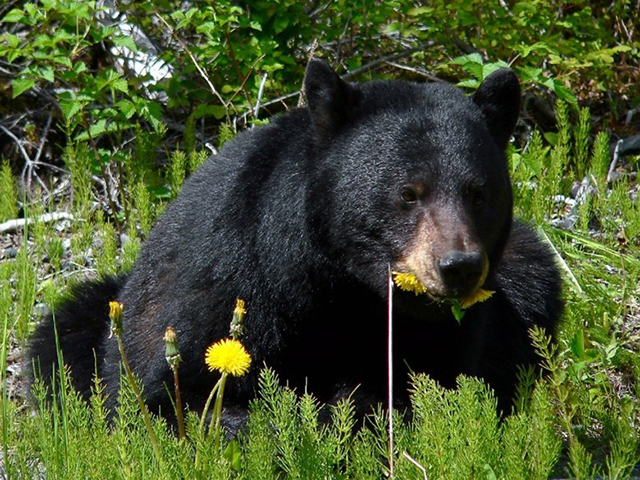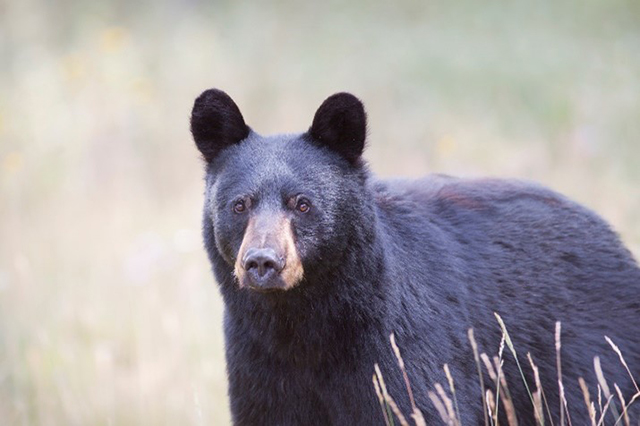Overview
Ontario’s black bear population is the second largest in North America. Ontario’s black bears:
- range from the Hudson Bay coast to the north, south to roughly the edge of the continuously forested areas of Southern Ontario, including an isolated population on the Saugeen Bruce Peninsula
- are an important part of Ontario’s biodiversity and healthy ecosystems
- provide social and economic benefits to thousands of residents and visitors
Black bear hunting
What you need to know before hunting black bear in Ontario, including rules, licensing and where or when to hunt.
Hunting regulations summary
Read the rules and regulations for hunting black bear in Ontario, including season dates.
Licensing
Find out what you need before you can hunt in Ontario and how to get it.
Hunter reporting
Learn how to submit your hunter report.
Hunting black bear with a licensed bear operator
Find out how Ontario residents and non-residents can hunt black bear using a licensed bear operator.
Wildlife Management Units
Use these maps to identify the boundaries of your Wildlife Management Unit (WMU).
Be Bear Wise and prevent bear encounters
Learn how to prevent encounters with black bears, what to do if you encounter a black bear and who to contact.
Black bear population management
Learn how black bear population management is guided by policies, hunter reporting and other monitoring efforts.
Black bear management framework
Read about how we manage black bear populations in Ontario.
Hunter reporting summaries and activity.
Review hunter report summaries or data on hunting activity and harvest.
Black bear premolar tooth data
To help determine the age of harvested black bears, we rely on premolar teeth submitted by successful black bear hunters.
Learn about black bear tooth submission, including:
- how hunters can submit premolar teeth from each harvested black bear
- the data we collect from these teeth
- how this important information helps us better manage Ontario’s black bear populations
Barbed-wire hair trap surveys
Each year, between mid-spring and early summer, we conduct barbed-wire hair trap surveys to continuously monitor Ontario’s black bear populations. Surveys are conducted across the province in different WMU’s each year.
When surveys are in progress, survey areas are marked with signs for public awareness.
About the hair trap surveys
We will set up survey stations in forested areas with a small number of canned sardines to encourage bears to investigate the survey station.
When a bear comes to the station, it brushes up against a single strand of barbed wire, which captures a small sample of the bear’s hair. Hair trap surveys do not disturb or injure the bear.
We will visit the site once a week for 6 weeks to collect hair samples. We will wear clothing that identifies us as ministry staff and will wear hunter orange during the spring hunt.
The collected hair samples undergo DNA analysis to determine:
- the sex and identity of the bears
- how many bears are new or returning visitors to the site
Annual data collected from barbed wire hair trap surveys support sustainable black bear management decisions by helping us:
- identify population changes
- inform harvest management decisions with timely information
- calculate quotas to maintain healthy black bear populations
Safety measures to consider in areas being surveyed
- Look for signage posted in your area that says data collection is underway.
- Be aware of our staff working in the area.
- Stay alert for black bear activity around the survey stations.
- Keep all non-hunting dogs on Crown land under your control (such as on a leash).
- Call 911 or your local police if a bear you encounter is an immediate threat to public safety and is exhibiting threatening or aggressive behaviour.
How you can help us
- Do not disturb the survey stations.
- Tell your neighbours about the survey.
Wildlife food surveys
Since 1998, we have conducted widespread surveys of wildlife food availability to help us understand and explain how food availability in summer and fall:
- varies between years
- affects wildlife reproductive success
- affects winter survival
We use this data to better understand and in some cases predict, black bear behavior and population dynamics in different years.


